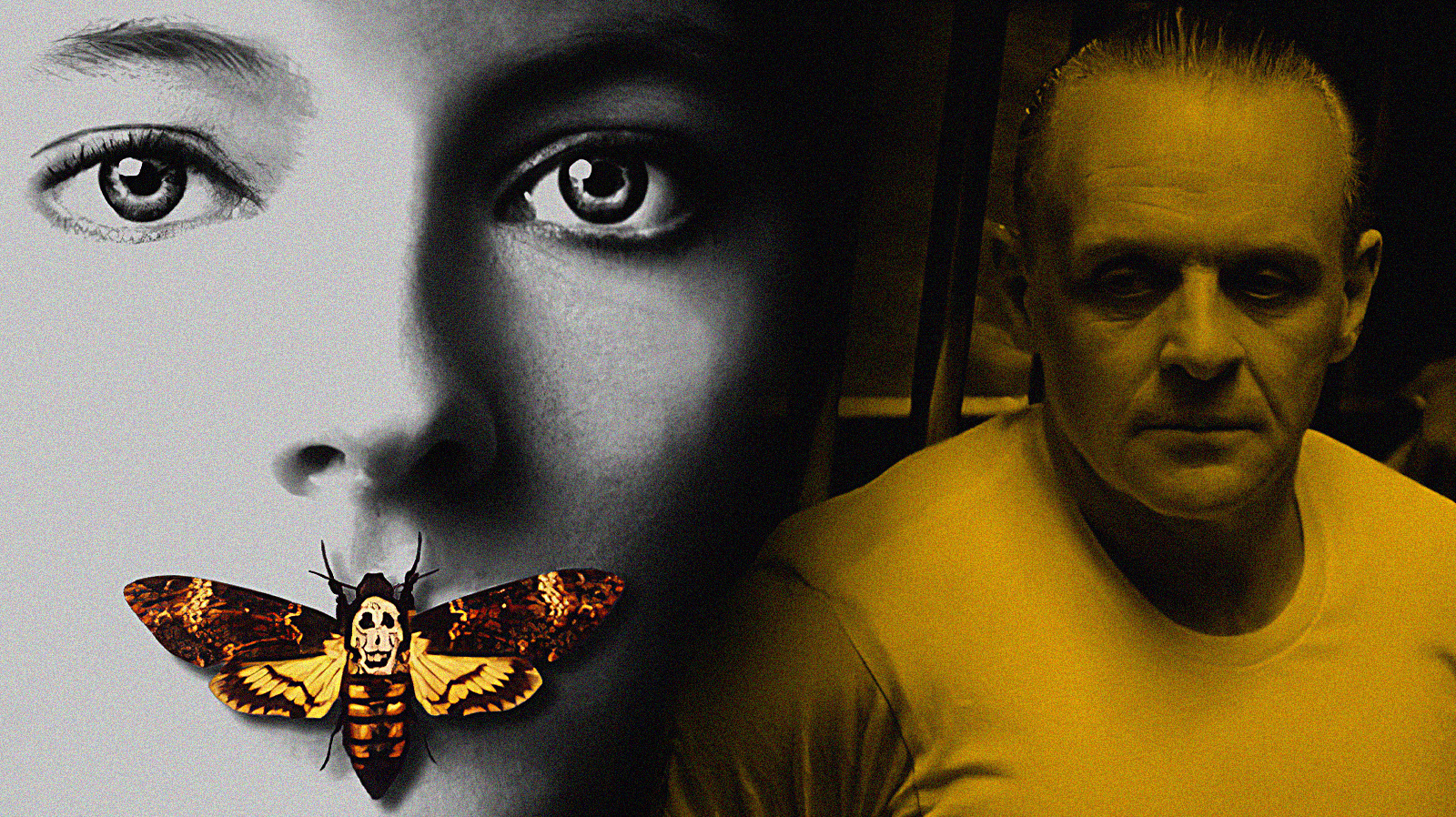
The Moth in The Silence of the Lambs Poster Has a Scandalous Secret
In the realm of iconic cinema, Jonathan Demme’s 1991 thriller The Silence of the Lambs stands out, captivating audiences with its blend of suspense and psychological intrigue. A central motif in the film features FBI cadet Clarice Starling, played by Jodie Foster, as she uncovers shocking evidence while examining a corpse retrieved from Elk River in Clay County, West Virginia. One of the most striking details of the case is the bizarre diamond patterns carved into the victim’s skin. More alarming is the delicate cocoon found lodged in the victim’s throat, leading Starling on a path of investigation that intertwines human psychology with entomology.
After Starling presents the strange cocoon to two entomologists, we learn that it belongs to the species acherontia styx, commonly known as the death’s head moth. This particular moth is easily identified by a distinct white marking on its thorax that resembles a human skull. Its visual prominence in the marketing of The Silence of the Lambs is undeniable; the moth often appears on posters, with its wings dramatically covering the faces of either Clarice or Hannibal Lecter, portrayed by Anthony Hopkins, the intelligent yet imprisoned serial killer who aids her inquiry.
However, upon closer inspection, the death’s head moth depicted on the film’s promotional materials is not the same as the one featured in the movie. In a fascinating twist, the skull design on the poster is derived from a well-known Salvador Dalí photograph titled In Voluptas Mors, taken by fellow surrealist Philippe Halsman. The image features a tableau of several nude figures meticulously arranged to form a massive skull, capturing the viewer’s eye with its bold and surreal composition.
Interestingly, the inclusion of Dalí’s photo required some adjustments for the film’s poster—particularly to remove any explicit nudity to comply with the Motion Picture Association of America (MPAA) guidelines. The poster’s designer, Dawn Baillie, recounted the challenge of modifying the original artwork while keeping its artistic integrity intact.
Dalí, known for merging themes of sexuality with death, often created pieces that blurred the lines between the sensual and the morbid. His artistic collaboration with Halsman spanned multiple projects and resulted in groundbreaking visual works, including published collections like Dalí’s Mustache.
While The Silence of the Lambs features the death’s head moth, the film inaccurately identifies it in entomological terms. The hawkmoth in question is more benign than its ominous name suggests, often seeking out fruits and honey as its primary food sources. The moth has a remarkable ability to emit a scent mimicking bees, allowing it to infiltrate hives for honey theft—though not without risking confrontation with guard bees.
Buffalo Bill, the film’s antagonist, portrayed by Ted Levine, creates tension not only through his gruesome acts but also his connection to the moth. The narrative suggests that if he is cultivating these insects, he must have imported them, as the species is not native to the United States. The investigation takes a turn as Jack Crawford, played by Scott Glenn, finds documentation tracing live insect transactions back to Suriname, hinting at the depths of the killer’s twisted psyche.
The moth on the Silence of the Lambs poster is actually an entirely different subspecies, the acherontia atropos, otherwise known as the African death’s head hawkmoth. This larger subspecies is found throughout Africa and adds an additional layer of intrigue to the film’s imagery.
Behind the scenes, the talented Hollywood bug wrangler Ray Mendez was responsible for managing the living moths featured in the film. His expertise extends beyond The Silence of the Lambs, having worked on various projects that required specialized knowledge of insects, including horror classics and comedies.
The significance of the moth within the film’s narrative cannot be understated. Lecter intriguingly comments that the moth symbolizes transformation, mirroring Buffalo Bill’s psychological journey as he seeks to shed his former identity. However, the portrayal of his character as a transgender figure has sparked ongoing discussions about transphobia in media. Lecter’s dismissive remarks about Gumb’s gender identity reveal a troubling perspective that has led to critiques of the film’s treatment of marginalized communities.
As a cultural symbol, moths have often been tied to themes of death and decay, perceived as the unappealing counterpart to the more delicate butterfly. The macabre image of the moth has been employed in numerous horror narratives, encapsulating the eerie and unsettling aspects of nature.
Overall, The Silence of the Lambs weaves a complex tapestry of psychological and societal themes, making it a film that continues to provoke thought and discussion. The moth serves as a potent reminder of the darker facets of identity, transformation, and the haunting shadows lurking beneath the surface of human behavior.



